#Linear B Tablets
Explore tagged Tumblr posts
Text
APPROACHES TO ARTEMIS IN BRONZE AGE GREECE
3 notes
·
View notes
Text

revenge
#yes this is oneirotects. No it's not oneirotects#first ever linear B yaoi tablet discovered in crete
206 notes
·
View notes
Text
⚠️⚠️⚠️ linear b translations and commentaries incoming ⚠️⚠️⚠️
#just to be clear this is revision for an exam so it is not every linear b tablet lol (which would be insane)#there will only be 35 translations overall#most of which will be very short#however feel free to block my translation tag if you want#here you go ->#abby's translations
17 notes
·
View notes
Text
university put us on autism duty
7 notes
·
View notes
Text
before i went to uni i thought linear b was so cool and mysterious.... then i took ancient greek and realized its more of a sickly victorian child
#i still adore it though... my sickly boy it has 1000 disease#is it comprehensible? mostly! is it the best script for greek? absolutely not! not at all! regardless it compels me#and i'm a sucker for administrative tablets what can i say#tagamemnon#linear b
3 notes
·
View notes
Text
the girls are heree

#i had to catalogue some mycenaean tablets for uni and i had to make a folder for each linear b syllabogram/logogram#this is the one for woman and... they're just there. standing. 🧍♀️🧍♀️🧍♀️🧍♀️🧍♀️#tagamemnon
5 notes
·
View notes
Text
it is also so funny how I'm just like "oh, I need to get this minute detail about art history right" but then I read other things like "oh, my protagonist probably shouldn't have any body hair? that's okay. this is a fantasy story. :)"
*quietly ignoring the history of papyrus so I can put books, of a sort, in this story that should by all rights be taking place in the minoan period*

#clay tablets and papyrus scrolls can coexist in this story#the linear a and linear b are on papyrus now#why is it called 'linear'? :) don't worry about it :) :)#it's fine it's fine this is about a sad bull-man who needs hugs anyway#just tell yourself it's an AU where egypt had contact with crete very early :)#writing liveblogging
6 notes
·
View notes
Text
Achilles is actually a Mycenaean Name
For the Achilles fans out there I wanna drop the random fact that his name actually appears in the Linear B tablets

A-ki-re-u
So the name of the hero is at least as old as the Mycenaean Greeks!
You're welcome!
PS: "Achilles" probably comes from the word "ἄχος" (achos) which means "pain" or "suffering" or "sighing" or "grief" and "λαός" (laos) which means "people".
So basically "Achilles" means "the suffering of people" or "grief from the people", which indicates both the character's profound grief as well as the rest of Iliad greeks who suffered by his rage
Suffer now!
#greek mythology#tagamemnon#achilles#achilles's name#ilias#the iliad#homer iliad#homer#homeric epics#homeric poems#homeri epics#patrochilles#ancient greek names#greek mythology names#mycenaean greek#mycenaean#linear b#naming in ancient greek sources#sing oh muse#the epic cycle#heroes of the trojan war#katerinaaqu analyzes
245 notes
·
View notes
Text
Minoan Kilt
The large, structural skirt worn by Minoan women in art is instantly recognizable, and when I made my own I combined current best guesses with my own personal tastes.

My kilt shape follows the hypothesis laid out by Bernice Jones in her book Ariadne's Threads: The Construction and Significance of Clothes in the Aegean Bronze Age. She describes the shape of that of a labrys, a double-headed axe with apparent ceremonial significance in Ancient Minoan culture. This garment may be depicted in Linear-B logogram *166 + we, we-being the backwards-s-shaped squiggle in the center which identifies the piece as a garment.

See pages 336 and 341 in Marie-Louise B. Nosch, The Textile Logograms in the Linear B Tablets
Actual details on construction and materials below the cut:
Construction:
The top and bottom edges of the kilt are concave, so the sides are longer than the middle. This gives the chevron-shape seen on layered kilts in art. In addition, the curved top half makes the skirt flare out, accommodating the hips and giving more freedom of movement to the legs. My kilt measured from my waist to my anklebone at the longest point, and about 1.5 times around my waist.
I chose to make a flounced kilt, with smaller strips of fabric and trim applied to a large base piece, rather than a tiered kilt, in which multiple kilt shapes of varying length are layered one on top of the other, so you end up wrangling 3 layers of fabric around the waist. The flounced kilt saves fabric and gives you a lot more freedom with whatever trim you might want. Jones' diagram for a flounced kilt is seen below:

Unlike the version in the diagram above, I chose not to attach ties to the garment itself both because the linen I used was very heavy and I was concerned about weight, and also because folding the skirt and securing it with a separate tie worked just fine for my tastes. In total I had four flounces: 2 alternating rows each of fabric and fringe.
The vertical edges of most kilts are left plain, probably representing either the selvage or an edge otherwise finished off to prevent fraying. For my kilt, however, I ended up with a couple inches of self-fringe on either side as I adjusted the fabric to the correct width. At least three examples of kilts with fringed vertical edges are known, all three from the so-called "House of the Ladies" in Akrotiri
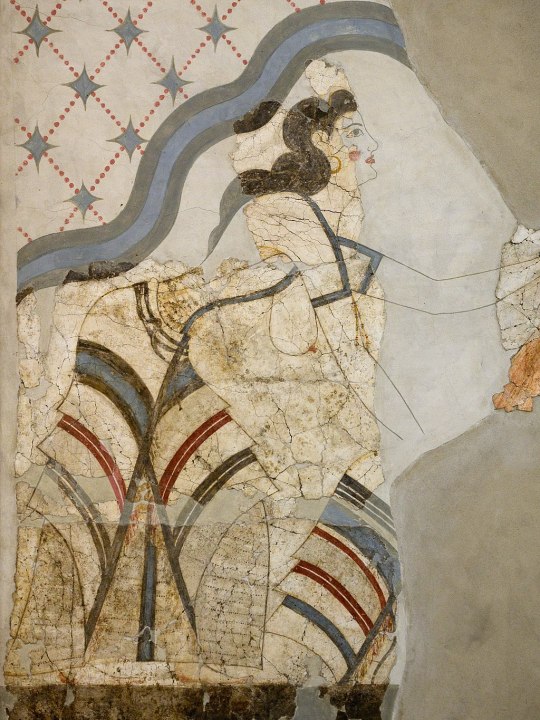

Photos from Wikimedia Commons. Image 1. Image 2.
The vertical edges of these kilts are reinforced with a colored band or tape, probably to keep the garment from unintentional further fraying. Accordingly, I did the same on my kilt. I also like that it gave a nice vertical diagonal to counterbalance the horizontal ones.
Materials
I tried to use mainly linen and wool, the fibers most available on Ancient Crete, but some of my trim was cotton because sometimes you just have to use what's cheap and available in the today times.
The base of my kilt is a heavy, patterned linen in what's called a diaper weave, meaning that a repeating diamond pattern is woven into the pattern itself. A lot of the Minoan textiles depicted in frescoes are characterized by repeating geometric patterns, likely woven into the fabric itself, and that was something I wanted to capture in my own piece. My linen is woven with both cream and natural colored threads. The heavy weight is important to give structure to the garment--otherwise it would be kind of limp. My linen was from Burnley & Trowbridge (shameless plug), as was the plain cotton twill tape I used to bind the top and bottom edges of the kilt, and the dark red wool twill tape I used along the vertical edges.
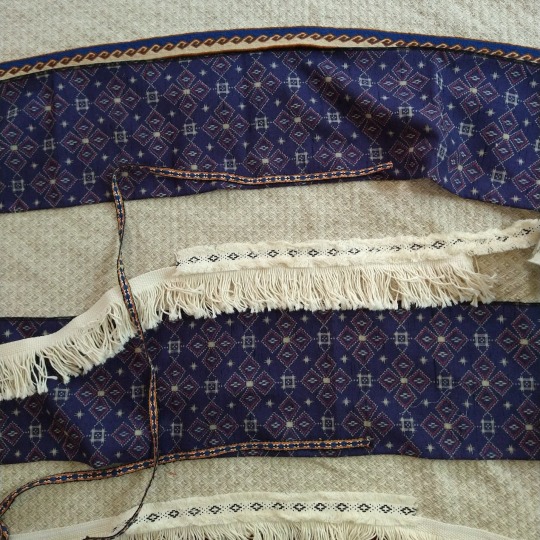
I bought my cotton fringe from a rug supply store. I had to search a while to find a fringe that would work for me, and I ultimately chose fringes with a woven header rather than the more common knotted one, so that it would lay flat against the kilt. I hid the woven header under a layer of cotton fringed trim from Michaels (yes, Michaels) with this really great diamond and dots pattern woven in black.
The blue layers are from a bolt of vintage wool Kimono fabric. Blue appears frequently in frescoes, likely achieved with indigo or woad dye, or even murex/mollusk dye. The fabric is printed with an imitation ikat pattern of diamonds and squares that made me think "the vibes seem right!" because quite frankly, you aren't going to get "historically accurate" Minoan textiles (which there probably isn't enough archaeological evidence to definitively describe) without, like, hand-weaving it yourself or paying someone hundreds of dollars to do it for you (and that price is if the weaver really likes you). Neither of which appealed to my desire to just make a fun, low stress project. Good enough is good enough.
The narrow trim on the bottom of the blue flounces is vintage cotton/poly woven trim. This trim, while narrow, was quite thick and stiff, which was great because it added more weight and structure to the end of my flounces since the wool fabric itself was quite thin.
The top layer is a custom tablet-woven wool trim that I commissioned from MAHTAVAhandicraft on Etsy. I imagined this as the "centerpiece" of my kilt, and I'd arrange everything to complement it.
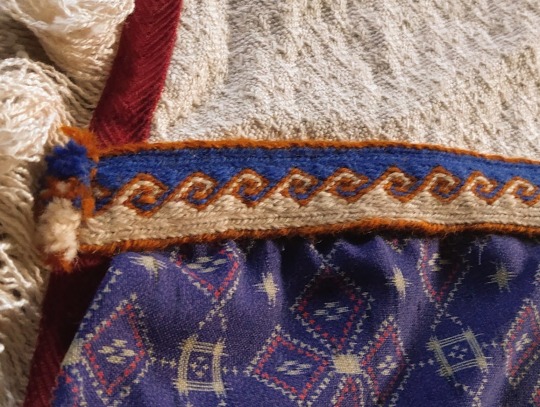
It's a kivrim pattern, which has itself only been traced to 19th-century Anatolia, but I didn't care. The way it looks like waves reminded me of how central the sea was to life in the Ancient Aegean and Mediterranean and it captured the idea and aesthetic I was pursuing. I mean, doesn't it remind you of these dolphins?

(I like the dolphins)
The whole thing was machine sewn with the exception of hemming and adding trim to the blue flounces. If you were to look at it from the back, you'd see lots of zigzag stitches, because i wanted to be fast! and have fun! not chase some unreachable ideal of "accurate."
As for wearing it, I chose to wear it with the top part folded/rolled down over a belt, so I have a thick tube of fabric around my waist. Many images, like the frescoes above of women with fringed kilts, appear to just show the kilt being tied closed. Other images are so fragmented or stylized that it's unclear what kind of skirt closure was used. Sculptures and figurines definitely show some kind of SOMETHING around the waist, whether this is folded fabric or a kind of belt is unclear. Different art could show different things!
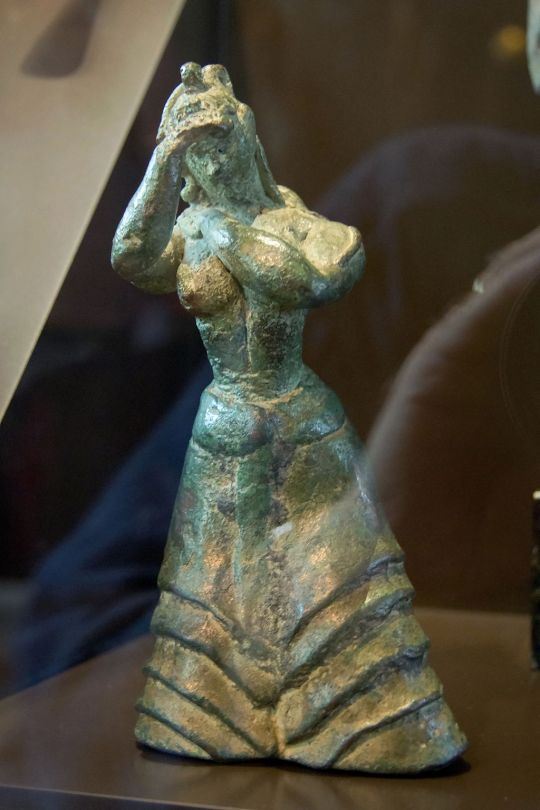
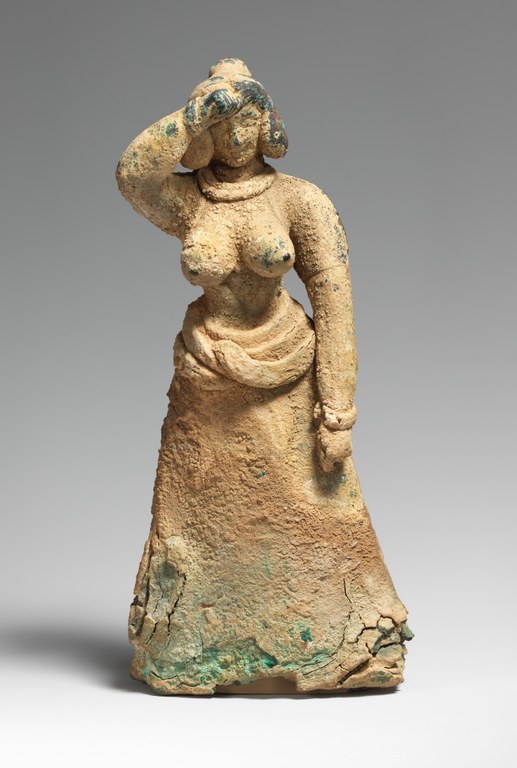
I think I see evidence of a continuous line from the skirt to the waist-roll on the figure on the left, found in Troas, which I think indicates some kind of skirt-folding situation. The woman on the right, found in Crete, looks more like she's wearing some kind of long coiled belt, or perhaps snakes. Who knows? I don't! For my own part, I found the combination of rolled waist + tie belt the most secure for doing things like kneeling, stomping around, and wading into rivers to rescue bees. I also liked that it gave me the bulk around the hips that gives Minoan figurines such a powerful silhouette, and proportionally gives more of an hourglass shape. If you wanted to do something more firmly grounded in the sources, stick just with the waist tie or belt, wrapped around a couple times and tied in back. If you want to be like me, just say "well we don't KNOW it didn't happen" and just do whatever you want. Have fun! Whatever happens, it should be fairly easy to move around in the kilt--this is not a restrictive garment, just a heavy one.
853 notes
·
View notes
Photo

Hermes
Hermes was the ancient Greek god of trade, wealth, luck, fertility, animal husbandry, sleep, language, thieves, and travel. One of the cleverest and most mischievous of the 12 Olympian gods, Hermes was their herald and messenger. In that position, he came to symbolise the crossing of boundaries in his role as a guide between the two realms of gods and humanity.
Hermes was known for his impish behaviour and curiosity. He invented the lyre, the alphabet, and dice. The latter explains why the god was beloved by gamblers. Hermes was the patron of shepherds and invented the panpipes they used to call their flock. To the Romans, the god was known as Mercury.
Origins & Family
Hermes has a very long history, being mentioned in the Linear B tablets of the Mycenaean civilization, at its height from the 15th to 13th century BCE. Such tablets have been discovered at Pylos, Thebes, and Knossos. With origins, then, as an Arcadian fertility god who had a special love for the Peloponnese, the ancient Greeks believed Hermes was the son of Zeus and the nymph Maia (daughter of the Titan Atlas) and that he was born on Mt. Cyllene in Arcadia. In mythology, Hermes was also the father of the pastoral god Pan and Eudoros (with Polymele), one of the leaders of the Myrmidons, although the god was not given a wife in any Greek myth. The idea that Hermes represented movement is reflected in his role as the leader of both the Nymphs and Graces (Charites).
Continue reading...
150 notes
·
View notes
Text
Mycenaean Greek
(and examples of lexical evolution to Modern Greek)
Mycenaean Greek is the most ancient attested form of the Greek language (16th to 12th centuries BC). The language is preserved in inscriptions of Linear B, a script first attested on Crete before the 14th century BC. The tablets long remained undeciphered and many languages were suggested for them until Michael Ventris, building on the extensive work of Alice Kober, deciphered the script in 1952. This turn of events has made Greek officially the oldest recorded living language in the world.
What does this mean though? Does it mean that a Modern Greek could speak to a resurrected Mycenaean Greek and have an effortless chat? Well obviously not. But we are talking about the linear evolution of one single language (with its dialects) throughout time that was associated with one ethnic group, without any parallel development of other related languages falling in the same lingual branch whatsoever.
Are we sure it was Greek though? At this point, yes, we are. Linguists have found in Mycenaean Greek a lot of the expected drops and innovations that individualised the Hellenic branch from the mother Proto-Indo-European language (PIE). In other words, it falls right between PIE and Archaic Greek and resembles what Proto-Greek is speculated to have been like. According to Wikipedia, Mycenaean Greek had already undergone all the sound changes particular to the Greek language.
Why was it so hard to decipher Linear B and understand it was just very early Greek? Can an average Greek speaker now read Linear B? No. An average Greek speaker cannot read Linear B unless they take into account and train themselves on certain rules and peculiarities that even took specialized linguists ages to realise and get used to. Here's the catch: Linear B was a script inspired by the Minoan Linear A, both of which were found in the Minoan speaking Crete. (Minoan Linear A inscriptions have yet to be deciphered and we know nothing about them.) The Mycenaeans (or was it initially the Minoans???) made only minimal modifications to produce the Linear B script and used it exclusively for practical purposes, namely for accounting lists and inventories. Linear B however was an ideographic and syllabic script that stemmed from a script that originally was not designed to render the Mycenaean Greek language, and thus it could not do it perfectly. In other words, the script itself does not render the Greek words accurately which is what made it extremely hard even for the linguists to decipher these inscriptions. Due to its limited use for utility and not for prose, poetry or any other form of expression, the Mycenaean Greeks likely did not feel compelled to modify the script heavily into some more appropriate, accurate form to cover the language's needs.
Examples of the script's limitations:
I won't mention them all but just to give you an idea that will help you then read the words more easily:
In the syllabic script Linear B, all syllable symbols starting with a consonant obligatorily have a vowel following - they are all open sylllables without exception. Linear B can NOT render two consonants in a row which is a huge handicap because Greek absolutely has consonants occuring in a row. So, in many cases below, you will see that the vowel in the script is actually fake, it did not exist in the actual language, and I might use a strikethrough to help you out with this.
For the same reason, when there are consonants together, at least one of them is often casually skipped in Linear B!
There were no separate symbols for ρ (r) and λ (l). As a result, all r and l sounds are rendered with the r symbol.
Exactly because many Greek words end in σ, ς (sigma), ν (ni), ρ (rho) but in Linear B consonants must absolutely be followed by a vowel, a lot of time the last letter of the words is skipped in the script!
Voiced, voiceless and aspirate consonants all use the same symbols, for example we will see that ka, ha, gha, ga all are written as "ka". Pa, va, fa (pha), all are written as "pa". Te, the are written as "te".
There are numerous other limitations but also elements featured that were later dropped from the Greek language, i.e the semivowels, j, w, the digamma, the labialized velar consonants [ɡʷ, kʷ, kʷʰ], written ⟨q⟩, which are sometimes successfully represented with Linear B. However, that's too advanced for this post. I only gave some very basic, easy guidelines to help you imagine in your mind what the word probably sounded like and how it relates to later stages of Greek, and modern as is the case here. That's why I am also using simpler examples and more preserved vocabulary and no words which include a lot of these early elements which were later dropped or whose decoding is still unclear.
Mycenaean Linear B to Modern Greek vocabulary examples:
a-ke-ro = άγγελος (ágelos, angel. Notice how the ke symbol is representing ge, ro representing lo and the missing ending letter. So keep this in mind and make the needed modifications in your mind with the following examples. Also, angel actually means "messenger", "announcer". In the Christian context, it means "messenger from God", like angels are believed to be. So, that's why it exists in Mycenaean Greek and not because Greeks invented Christianity 15 centuries before Jesus was born XD )
a-ki-ri-ja = άγρια (ághria, wild, plural neuter. Note the strikethrough for the nonexistent vowel)
a-ko-ro = αγ��ός (aghrós, field)
a-ko-so-ne = άξονες (áksones, axes)
a-na-mo-to = ανάρμοστοι (anármostoi, inappropriate, plural masculine. Note the skipped consonants in the script)
a-ne-mo = ανέμων (anémon, of the winds)
a-ne-ta = άνετα (áneta, comfortable, plural neuter, an 100% here, well done Linear B!)
a-po-te-ra = αμφότερες (amphóteres, or amphóterae in more Archaic Greek, both, plural feminine)
a-pu = από (apó, from)
a-re-ka-sa-da-ra = Αλεξάνδρα (Alexandra)
de-de-me-no = (δε)δεμένο (ðeðeméno, tied, neuter, the double de- is considered too old school, archaic now)
do-ra = δώρα (ðóra, gifts)
do-ro-me-u = δρομεύς (ðroméfs, dromeús in more Archaic Greek, runner)
do-se = δώσει (ðósei, to give, third person singular, subjunctive)
e-ko-me-no = ερχόμενος (erkhómenos, coming, masculine)
e-mi-to = έμμισθο (émmistho, salaried, neuter)
e-ne-ka = ένεκα (éneka, an 100%, thanks to, thanks for)
e-re-mo = έρημος (érimos, could be pronounced éremos in more Archaic Greek, desert)
e-re-u-te-ro-se = ελευθέρωσε (elefthérose, liberated/freed, simple past, third person)
e-ru-to-ro = ερυθρός (erythrós, red, masculine)
e-u-ko-me-no = ευχόμενος (efkhómenos or eukhómenos in more Archaic Greek, wishing, masculine)
qe = και (ke, and)
qi-si-pe-e = ξίφη (xíphi, swords)
i-je-re-ja = ιέρεια (iéreia, priestess)
ka-ko-de-ta = χαλκόδετα (και όχι κακόδετα!) (khalkóðeta, bound with bronze, plural neuter)
ke-ka-u-me-no = κεκαυμένος (kekafménos, kekauménos in more Archaic Greek, burnt, masculine)
ke-ra-me-u = κεραμεύς (keraméfs, kerameús in more Archaic Greek, potter)
ki-to = χιτών (khitón, chiton)
ko-ri-to = Κόρινθος (kórinthos, Corinth)
ku-mi-no = κύμινο (kýmino, cumin)
ku-pa-ri-se-ja = κυπαρίσσια (kyparíssia, cypress trees)
ku-ru-so = χρυσός (khrysós, gold)
ma-te-re = μητέρα (mitéra, mother)
me-ri = μέλι (méli, honey)
me-ta = μετά (metá, after / post)
o-ri-ko = ολίγος (olíghos, little amount, masculine)
pa-ma-ko = φάρμακο (phármako, medicine)
pa-te = πάντες (pántes, everybody / all)
pe-di-ra = πέδιλα (péðila, sandals)
pe-ko-to = πλεκτό (plektó, woven, neuter)
pe-ru-si-ni-wo = περυσινό / περσινό (perysinó or persinó, last year's, neuter)
po-me-ne = ποιμένες (poiménes, shepherds)
po-ro-te-u = Πρωτεύς (Proteus)
po-ru-po-de = πολύποδες (polýpoðes, multi-legged, plural)
ra-pte = ράπτες (ráptes, tailors)
ri-me-ne = λιμένες (liménes, ports)
ta-ta-mo = σταθμός (stathmós, station)
te-o-do-ra = Θεοδώρα (Theodora)
to-ra-ke = θώρακες (thórakes, breastplates)
u-po = υπό (ypó, under)
wi-de = είδε (íðe, saw, simple past, third person singular)
By the way it's killing me that I expected the first words to be decoded in an early civilisation would be stuff like sun, moon, animal, water but we got shit like inappropriate, salaried and station XD
Sources:
gistor.gr
Greek language | Wikipedia
Mycenaean Greek | Wikipedia
Linear B | Wikipedia
John Angelopoulos


Image source
#greece#history#languages#linguistics#greek#greek language#langblr#mycenaean greek#modern greek#greek culture#language stuff#vocabulary#linear b#mycenaean civilization
106 notes
·
View notes
Text
every now and then i think about this article that i read which traced the origins of Dionysos back through the ages. and apparently, He's one of the oldest deities known from the Greeks, and His name was seen on Linear B tablets dating back to the Minoans.
this is interesting for two reasons:
Dionysos is so often seen as a "foreign God", who came roaring out of some mysterious mountain in the East. but He's also there with the Minoans, receiving pretty large sacrifices, almost 3500 years ago.
the Minoans were the civilization that Ariadne came from - they were named after King Minos, they were actively on Crete. i can only wonder how old the story of Ariadne and Dionysos is, then. Ariadne wasn't mentioned in the article, but some research shows that it's a not unheard of opinion that Her name is old, and there's a good chance it came from the Minoans.
these two things put together just kind of show how interesting Dionysos is when it comes to being a God of opposites. He's been worshiped in Greece for almost 3500 years, and yet He's a young foreign God. He's married to a mortal woman and yet Her name echoes back to the very birth of Her own mythic kingdom, with an origin that may mean "most holy". together, Dionysos and Ariadne are both eternally young and eternally old, and there's just something that sticks in my head about that, you feel?
anyways, here are the two articles that i used for this:
Ariadne - Wikipedia
The Shocking True Origins of Dionysos - by Spencer McDaniel
#anyways there's something inherently sexy about ancient undeciphered languages like Linear B and all the things they're hiding <3#dionysos#dionysian#dionysus#dionysos deity#dionysus deity#ariadne#ariadne deity
389 notes
·
View notes
Text
PY En 609
Translation
There are so many households of Sphagianes. HOUSEHOLDS 40. And there are so many telestai within them. MEN 14. At the private plot of Warnataios, there is so much seed: WHEAT 2 V 1. Moreover, the tenants hold Warnataios’ plots. Atukhos, the royal e-te-do-mo holds a lease, so much seed: WHEAT V 1. I-ni-ja, the servant of the god, holds a lease, so much seed: WHEAT T2 V4. E-*65-to, the servant of the god, holds a lease, so much seed: WHEAT T 2. Si-ma, the servant of the god, holds a lease, so much seed: WHEAT T 1.
At the private plot of Amaruntas, there is so much seed: WHEAT 2 T. Moreover, the tenants hold Amaruntas’ plots. . So-u-ro, the servant of the god, holds a lease, so much seed. WHEAT V 3. Edomoeus, the servant of the god, holds a lease, so much seed. WHEAT T 1. E-sa-ro, the servant of the god,m holds a lease, so much seed. WHEAT V 1. Warnataios, the telestai, holds a lease, so much seed. WHEAT T 1. E-ra-ta-ra, the servant of the priestess at Sphagianes, holds a lease, so much seed. WHEAT T 1. Po-so-re-ja, the servant of the god, holds a plot, so much seed. WHEAT T 1 V 3. The priestess at Spagianes holds a lease, so much seed. WHEAT T 3.
Commentary
A record of land holding at Pylos, which is one of the major topics of tablets. These specific holdings concern Sphagianes. This record is actually compiled from two separate records, since one of them was broken in half. Nevertheless, they are almost identical. This suggests that the tablets weren’t always in their final form and instead may have been drafts.
Pa-ki-ja-ni-ja – Sphagiania. An adjective based on Sphagianes. Could be almost anything? Could be dative-locative.
to-sa – tossai – “so many.” Agreeing with da-ma-te. From *tot-yos.
da-ma-te – damartes – “households.” Feminine plural, built to a stem *dom-, related to buildings, houses, etc. Related to δαμαρ? A catch all term for the telestai and their tenants.
Te-re-ta – telestai – “service men?” τελος – “service” – and -ter agent suffix. These are high ranking officials. There are 13 recorded in the En series, but we would expect 14 given this tablet’s introduction. Where is our missing telestas?
e-ne-e-si – en-ehensi – “they are in.” 3rd person plural present tense of ἐνειμί < *h1es-enti.
wa-na-ta-jo-jo – Warnataioio. Genitive of a man’s name. Presumably one of the telestai. He also appears later in this tablet, as a tenant on another telastas’ land.
ko-to-na ki-ti-me-na – “settled land / private land.” There is a separate series about ko-to-na ke-ke-me-na, which is not associated with the telestai, and is held pa-ro da-mo.
pe-mo – spermo – “seed.” pe-mo/pe-ma alternation suggests a syllabic m ending?
o-da-a2 – ho-d’-aha. A complex particle introducing the paragraph. Equivalent to ὡς – δ’-ἄρα. “Moreover” is probably the best translation.
o-na-te-re – onateres – “leaseholders.” Agent noun describing a person that holds an o-na-to, a type of lease. The priestess argues in a later tablet that she has a different lease, but she in fact has o-na-to.
e-ko-si – hekhosi – “they hold.” From ἔχω.
e-te-do-mo , wa-na-ka-te-ro – wanakteros – “the royal e-te-do-mo.” Does e-te-do-mo have something to do with building?
3 notes
·
View notes
Text

"Mycenaean women put their own spindles to splendid use, producing luscious cloaks and long, richly patterned or striped skirts. Far from resigning themselves to the weaving rooms, they travelled in chariots, performed songs or poetry to the accompaniment of lyres, and carried wheatsheaves for public ceremonies and rituals, as vibrantly coloured frescoes from the palace at Mycenae reveal. In one of the most enigmatic paintings, one woman holds a sword, another a spear, while two tiny men, one painted red and the other black, float mysteriously between them, like toy models or thought bubbles. Through their contact with the divine, perhaps, the women pictured gain agency over the men’s fate. Hera, Zeus, Poseidon and a female birth and death goddess known as Potnia were among the deities the Mycenaeans are known to have worshipped. While Mycenaean women clearly played an important role in religion, their political position within the palaces was weaker than that of their Minoan counterparts, and secondary to the men’s. Each Mycenaean palace complex was presided over by a male ‘wa-na-ka’ or wanax.
Surviving clay writing tablets provide just as fascinating an insight into the lives of women in the real palaces of the Mycenaean era. The fullest collection of tablets comes from a pair of rooms in the palace complex of Pylos, but Knossos, the former Minoan capital, was also a key repository. A total of 4,476 tablets have been preserved across the two sites. Among these there are references to more than 2,000 different women. Unlike Linear A, the Minoans’ writing system, the Mycenaeans’ similarly syllabic Linear B has been successfully deciphered. Working (as opposed to non-working elite) women were denoted by signs resembling an abstract impression of the female form. ‘Woman’ was conveyed by two dots for breasts, legs joined to suggest a long skirt of the kind Mycenaean women wore, and a curved line where her head would be, suggestive of long or dressed hair (in the sign for a man, by contrast, there is a straight line for the head).
The women referred to in the tablets were employed in a wide range of jobs, many of them familiar from the Homeric epics. In the Odyssey, women grind wheat and barley, ‘the marrow of men’, at mills. There were ‘flour-grinders’ at the palace in Pylos. In both epics, women weave, whether royal or servile. Andromache works in the Trojan palace with a loom and distaff while ordering her servant women about their work. Helen embroiders a purple cloth with scenes from the Trojan War as if she were telling the story of the poem herself. And as we have seen, Penelope weaves and unweaves a funeral shroud for her father-in-law, Laertes. The women who wove at Pylos and Knossos were no less versatile in their handiwork. They managed something like a textile industry, producing goods for export as well as the palace community, and worked in groups according to specialism. There were wool-spinners and carders, linen- and leather-workers, finishers and headband-makers for horses. These women usually worked separately from men, but at Pylos there is evidence that at least two women, Wordieia and Amphehia, formed part of a mixed leather-making group.
Working groups were the modus operandi at the Mycenaean palaces. Women were usually accompanied by boys and girls, presumably their own children, as they went about their tasks. Many were divided also according to their geographical region. Pylos was split into sixteen districts over two provinces, Nearer and Further, separated by Mount Aigaleo. The palace-workers came from more than 200 named places, some of which may have been local streets, while others, including Lemnos, Miletus and Knidos, lay further afield. It is possible that, like the Sidonian (Phoenician) women carried to Troy by Paris in the Iliad to weave fine robes for the court, some of the women working in the Mycenaean palaces had been enslaved.
Although the women were engaged in hard, practical labour, their work was recognised as highly skilled, and the Mycenaeans took some pride in it. Men were sometimes described on tablets as being the offspring of women of particular crafts, for example, ‘sons of flax-workers’. Female workers were allocated the same amount of food in the regular distributions as their male counterparts, and twice as much as their children, whereas in Babylonia, men typically received three times the female ration.
A mysterious senior class of priestess at Pylos known as ‘keybearers’ (did they open and close shrines within the palace complex?) even owned land. A landowning keybearer named ka-pa-ti-ja (‘Karpathia’) was wealthy enough to donate almost 200 litres of grain to the palace, probably for a religious festival. Given the historical prominence of women at the court of Pylos, it is fitting that a mythical Pylian king should intervene in the dispute over Briseis in the Iliad. Old Nestor urges Agamemnon to return the woman to Achilles and to end their feud."
The Missing Thread: A Women's History of the Ancient World, Daisy Dunn
#history#women in history#women's history#historyedit#mycenaean greece#ancient greece#bronze age#ancient world#working women#women's work#greece#greek history
142 notes
·
View notes
Text
7 undeciphered writing systems
(While reading, remember that it’s possible to decipher a script and still not understand the language that the script represents.)
(Each heading links to that script's respective Wikipedia page.)
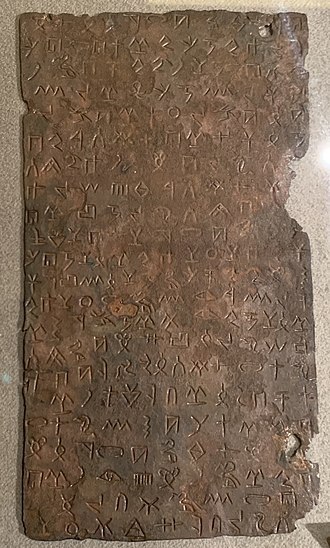
Byblos Syllabary
The Byblos syllabary is attested in 10 inscriptions found in Byblos, a coastal city in Lebanon. It likely represents a Semitic language, but despite a handful of attempts at decipherment, there still isn’t a consensus as to what sound each character represents.
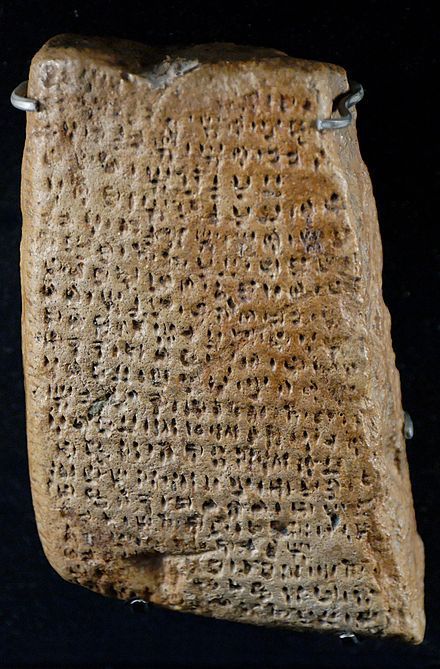
Cypro-Minoan Syllabary
The Cypro-Minoan syllabary appears on ~250 objects—especially clay balls and cylinders that were used for recording economic transactions—on the island of Cyprus.
The script suddenly disappears in 950 BCE and was replaced by the Cypriot syllabary, which was used to write Greek, and based on Cypro-Minoan. This evolution allows us to infer the sounds of some of the signs in Cypro-Minoan, but we still don’t know what language it represented—probably either Minoan or Eteocypriot.
There are only ~2,500 total instances of signs for Cypro-Minoan, which is significantly less than Linear B when it was deciphered (~30,000).
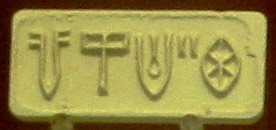
Indus Valley Script
The Indus Valley script is known from ~4,000 objects with very short inscriptions found in and around the Indus Valley, and represents the Harappan language (the unknown language of the Indus Valley civilization).
It has about 400 distinct signs, which is too many for each sign to represent a single sound or syllable, but too few for each sign to represent a word. Scholars thus think the system is logo-syllabic (basically a mix of the two).
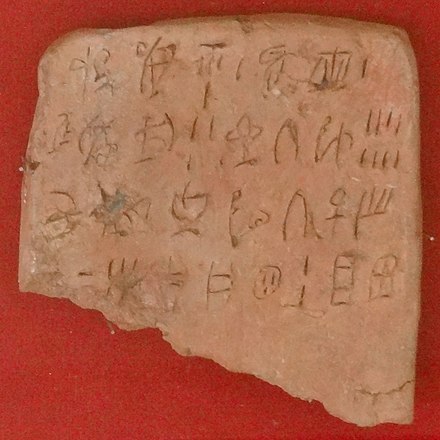
Linear A
Linear A: Everybody’s favorite mysterious undeciphered script. Linear A was used by the Minoans on the island of Crete, and is called “linear” because the script is written by cutting lines into clay, rather than pressing wedges into clay like cuneiform.
Linear A was adapted to write Mycenean Greek and became Linear B (deciphered in the 1950s), and because of this we can infer many of the sound values of symbols in Linear A. However, 80% of Linear A’s signs are unique, not shared with Linear B.
Linear A itself probably developed from the earlier Cretan hieroglyphs, which are also undeciphered.
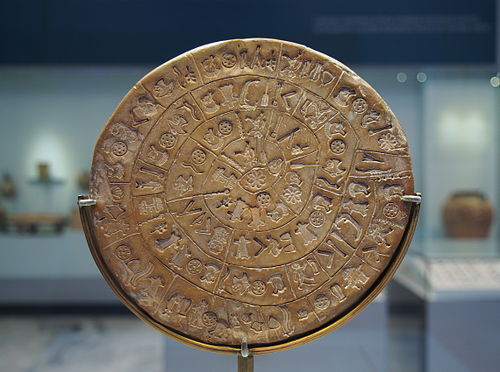
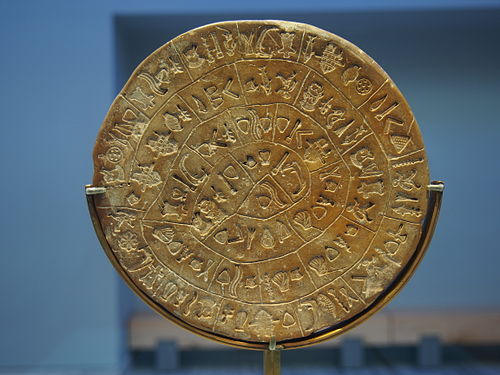
Phaistos Disk
The Phaistos Disk. Also from the Minoan civilization on Crete, yet seemingly unrelated to Linear A. This disk is the only certain attestation of this (assumed) script, spiraling around both sides. There are 242 tokens comprising 45 distinct signs.
The Phaistos Disk also happens to be an early example of moving type printing, since each character was made by pressing seals into clay.
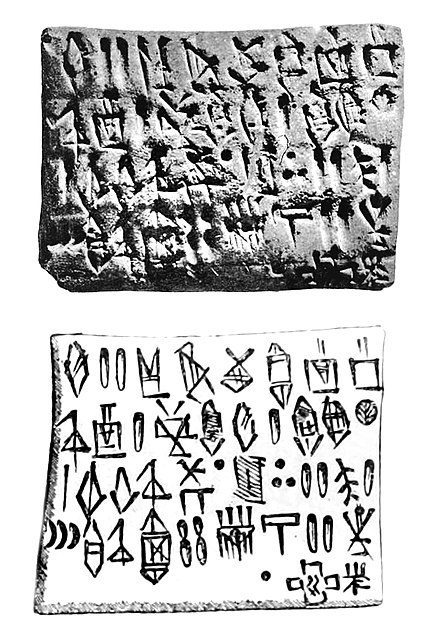
Proto-Elamite
The Proto-Elamite script developed alongside Proto-Cuneiform, and was used for similar functions and in similar ways until it was replaced by cuneiform. Proto-Elamite, like cuneiform, began as a system of marking tokens and spheres with details of economic transactions.
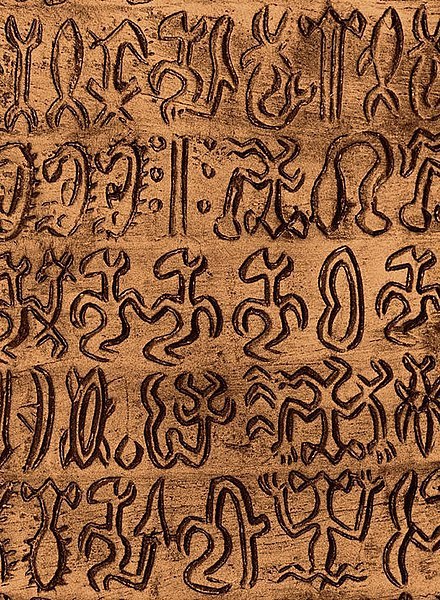
Rongorongo
Rongorongo is a system of glyphs used on Rapa Nui (Easter Island), found only on about two dozen wooden objects. According to oral history, the tablets were considered sacred, and only a small elite class could read them. Unfortunately, that tradition was wiped out after slaving raids and epidemics caused the collapse of Rapa Nui society.
Though the glyphs, if they are writing, undoubtedly represent the Rapa Nui language, little is known about it because modern Rapa Nui has had heavy influence from Tahitian.
---
Want to learn more about the world’s writing systems and their history? Check out my curated list of books on Writing & Writing Systems!
461 notes
·
View notes
Note
Hello! Do you have any interesting facts about the goddess Hera?
anon you’re my hero for asking this question 🙏🏻
I have too many facts that I love about the goddess of women, so I’ve narrowed it down to five:
1. In one version of the story, Medea (granddaughter of Helios, heroine in greek myths) leaves her children at Hera’s altar so she can turn them immortal. Medea is also said to have established Hera’s cult at Corinth
2. Hera may have been the first deity to whom the Greeks dedicated an enclosed roofed temple sanctuary, at Samos about 800 BC.
3. Swearing something ‘By Zeus’ was a common oath in ancient texts. However, Socrates repeatedly uses the more unique oath ‘By Hera’, saying sentences such as: ‘I swear it by Hera’
4. Hera and her daughter Eileithyia’s names were found in Linear B tablets, meaning that they were already worshipped in 1400-1200 B.C
5. And finally, I want to share my favorite description of Hera from the book “Ancient Greek Cults” by Jennifer Larson:
“But in her most famous cults (Argos and Samos) Hera is a powerful city goddess who fosters economic and military success. In these cases her relationship to Zeus is not a crucial factor, and the literary portrait of a jealous, scheming wife seems far removed from the cultic experience of an awe-inspiring deity who brings success in battle, multiplies the herds of cattle, frees the enslaved, and protects the young for her chosen people.”
301 notes
·
View notes